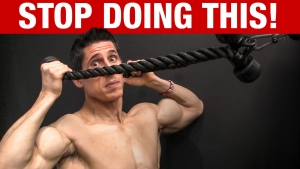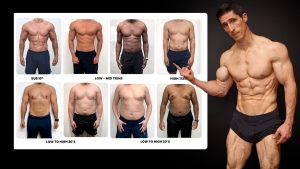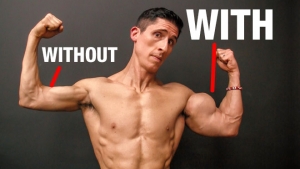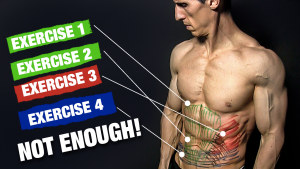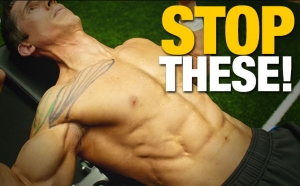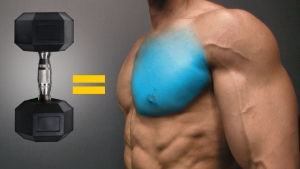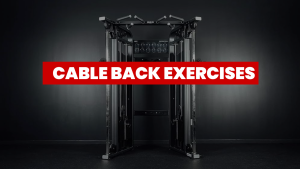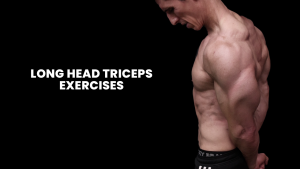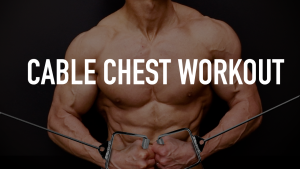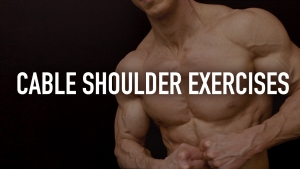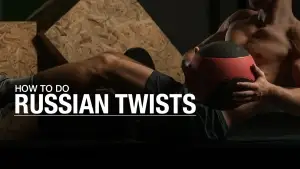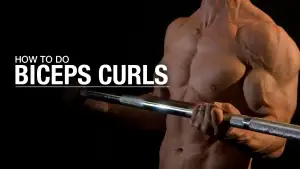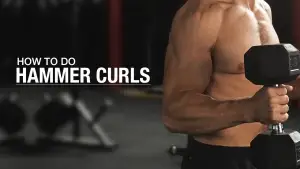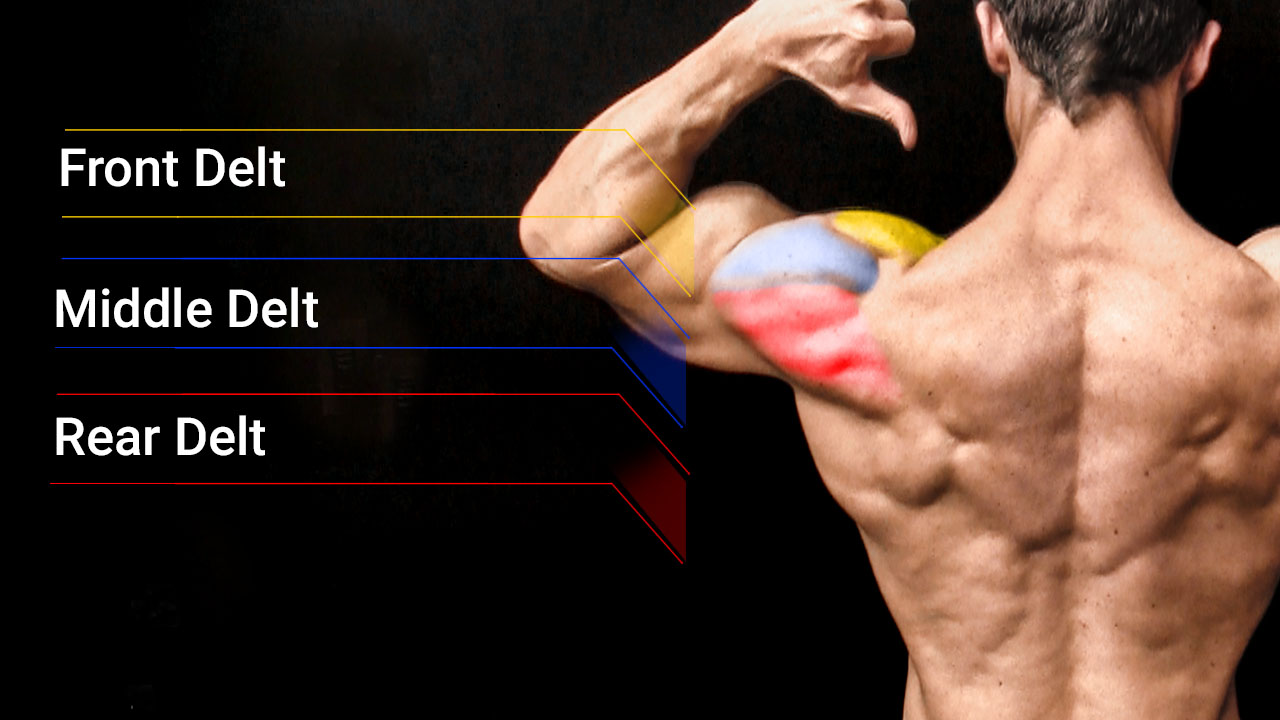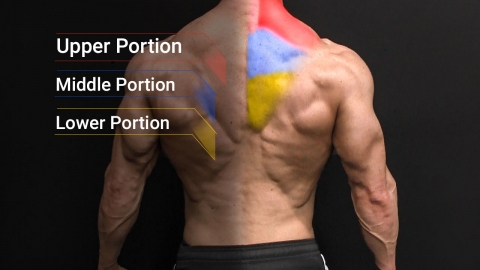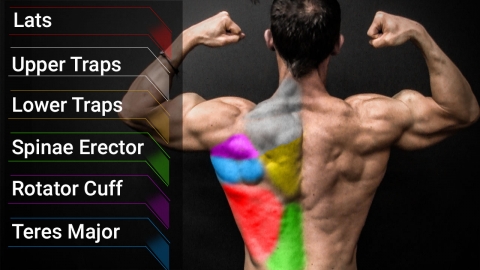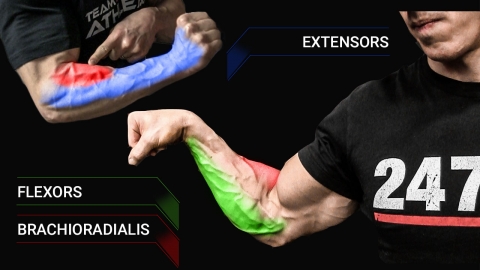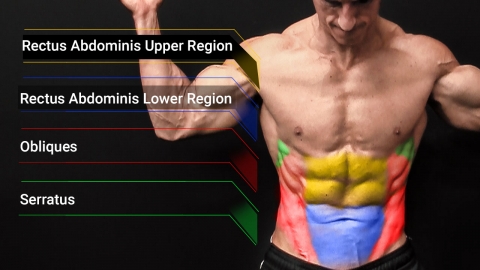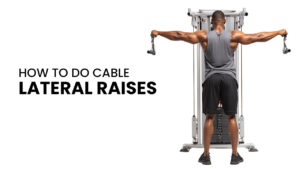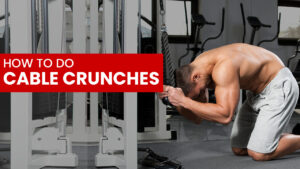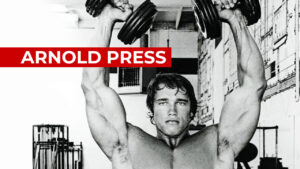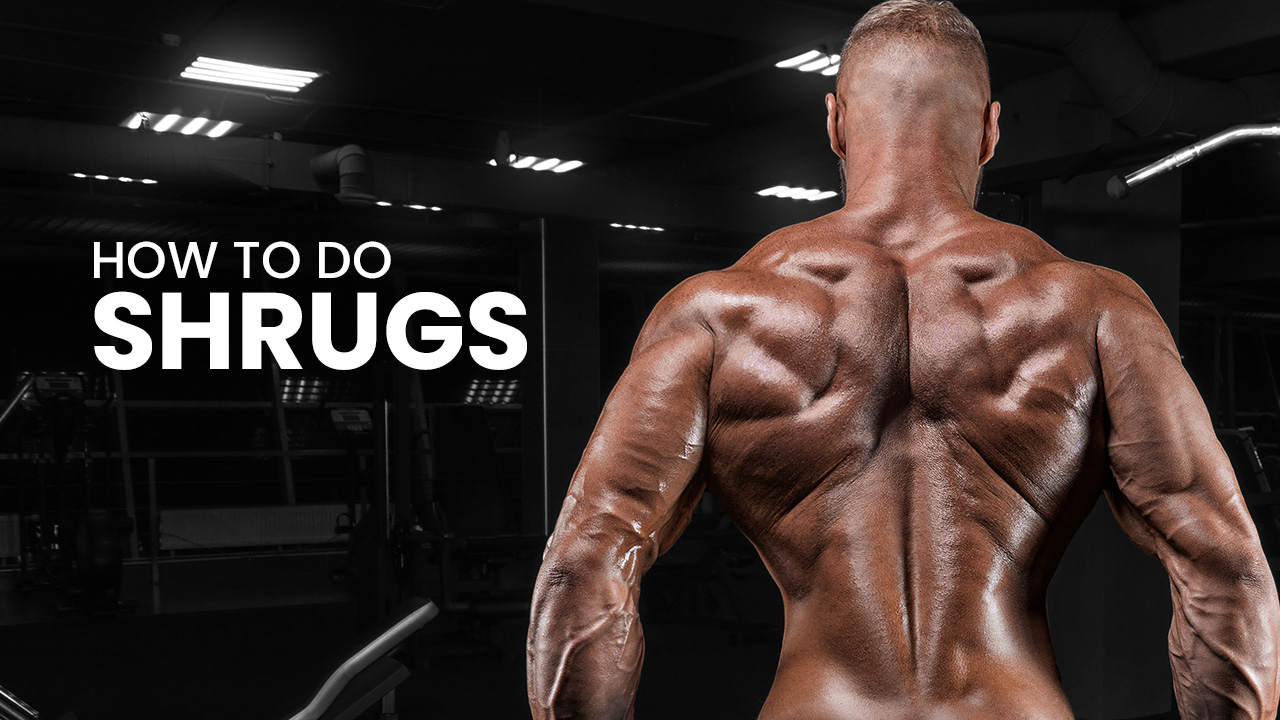
WHY do shrugs?
Worse, they’re turning them into an ego contest instead of the precision move it’s supposed to be.
Loading up a Barbell Shrug with sloppy form won’t build bigger traps. It just shortens the range of motion, stresses the shoulder joints, and puts the cervical spine at risk.
And don’t get me started on the people who are skipping Shrugs in their workouts.
The trapezius muscles aren’t a vanity add-on. They stabilize your shoulder blades, protect your neck, and support nearly every compound lift from Barbell Rows to the Overhead Press.
Too many lifters treat the Shoulder Shrug like a throwaway exercise, stacking weight plates, bouncing the bar, and carelessly moving through reps.
No wonder their traps never grow.
Done right, Dumbbell and Barbell Shrugs are one of the most effective trap exercises you can put into your program, building strength that carries over to the rest of your training routine.
Let’s dive into this complete guide on how to do Shrugs. I’ll cover the muscles worked, how to do the exercise with perfect form, common mistakes, and how to program it into your weekly exercise routine.
SHRUGS: MUSCLES WORKED
Most people think of shrugs as a “trap-only” move, but that’s selling the exercise short.
A proper shrug isn’t just about stacking muscle mass on the upper trapezius. It’s about engaging a network of muscles that keep your shoulders, neck, and spine stable under load.
From grip strength in your forearms to the stabilizers in your midsection, this lift connects directly to the performance of your bigger compound lifts.
Before you get started with how to do Shrugs, take a moment to learn about the muscle groups behind the movement.
This will improve your mind-to-muscle connection, ensuring you’re ready to do it right every time.
UPPER TRAPEZIUS
The upper trapezius is the main muscle group most people associate with shrugs, and for good reason: it does the literal heavy lifting.
You can find this muscle along the tops of your shoulders, running from the base of the skull and cervical spine down to the clavicle and scapula.
The upper trapezius elevates the shoulder blades, assists in scapular upward rotation, and helps stabilize the neck under load. It also keeps the shoulder joints secure during pressing and pulling.
During a Dumbbell Shrug or Trap Bar Shrug, the upper trapezius does the bulk of the work by lifting the shoulder blades straight up.
Pausing at the top of the movement forces a strong muscle contraction that drives muscle growth.
The strength you build here transfers directly to compound lifts like the Upright Row, Barbell Row, and Overhead Press.
MID- AND UPPER BACK
Shrugs aren’t just about the upper trapezius. They pull in the mid- and upper back as well.
The rhomboids and middle traps assist by retracting the shoulder blades, especially during Shrug exercise variations like the Single-Arm Dumbbell Shrug, Leaning Dumbbell Shrug, and Cable Angled Shrugs.
Training these muscles builds thickness through the mid-back and improves posture by preventing your shoulders from rounding forward.
Strength in this area also improves exercise form across other lifts, whether it’s holding an Inverted Row, keeping tension during Cable Pulldowns, or staying upright during Lateral Raises.
In a timed workout or under a heavy training load, the mid-back is the difference between collapsing under the bar and locking in for growth.
NECK MUSCLES
The smaller neck muscles, including the levator scapulae, play an important supporting role in Shrugs.
They help tilt and stabilize the shoulder blades while also protecting the cervical spine when training weights get heavy.
If your initial position is sloppy with your arms stretched out and posture leaning forward, you’ll shift the load away from the traps and dump it into these smaller muscles.
This will set you up for strain instead of strength.
But when your exercise form is dialed in, these muscles contribute to stability that carries over to other lifts.
From Kettlebell Thrusters to Seated Dual / Front Raises to Resistance Band Squats, strong neck support allows your traps and shoulders to handle bigger training loads safely.
FOREARM MUSCLES
Shrugs are also a grip strength test. Even if you use lifting straps to reduce forearm demand, holding onto heavy dumbbells, a trap bar, or a barbell in the power rack requires serious grip strength.
Your forearm muscles stay under tension throughout the movement, especially when your arms are stretched out in the initial position.
Over time, this adds real size to the forearms and builds strength that translates directly to other lifts, especially compound lifts where your grip can fail before the target muscle group does.
If your fitness goals include lifting heavier training weights across the board, Shrugs double as a direct grip-strength builder while still driving trap development.
CORE MUSCLES
The midsection is the silent partner in every Shrug.
The transverse abdominis and rectus abdominis may not elevate the shoulder blades, but they lock your torso in place from the starting position through the top of the movement.
This stability protects the posterior chain and keeps the training load where it belongs: on the traps.
If your midsection muscles are weak or unbraced, you’ll sway, cheat, and lose tension, cutting off the muscle contraction in your traps.
Proper core bracing also ties into better performance in other lifts.
HOW TO DO SHRUGS
The Shrug is one of those lifts that hides its difficulty behind simplicity. No complicated setup and no dramatic range of motion. It’s just your shoulders going up and down, right?
That’s exactly why most people never get past “good enough” form.
What looks basic on the surface is a test of precision: the right starting position, the right line of pull, and the right control at the top of the movement.
Get those details wrong, and you’re just moving weight plates.
Get them right, and you unlock trap development that carries over into stronger pulls, presses, and posture.
Let’s break down exactly how to perform both the Barbell Shrug and Dumbbell Shrug exercises:
BARBELL SHRUGS

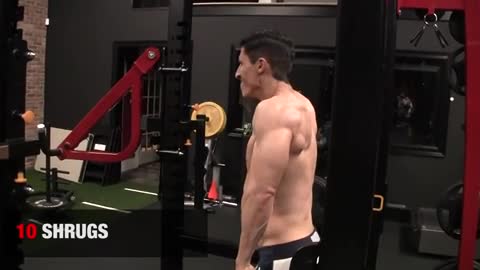
HOW TO DO BARBELL SHRUGS:
- Start from the standing position with a barbell held in front of your thighs using a shoulder-width, overhand grip.
- Your feet should match shoulder width, and your core should be tight as if you’re bracing for a punch.
- Instead of yanking the shoulders straight up, think about pulling them up and slightly back at an angle, almost as if you’re trying to touch your ears. The traps run from the cervical spine and thoracic spine into the clavicle and acromion, so following the line of those fibers gets you the strongest contraction.
- At the top of the movement, hold for a one-to-two second pause. That’s where the traps, the main muscles of this exercise, are firing at maximum intensity.
- On the descent, don’t simply drop the weight back down. Allow the shoulders to round slightly forward as the bar lowers toward your thighs. This controlled forward eccentric provides a fuller stretch across the traps, creating more muscle contraction and setting up better long-term muscle growth.
- The sequence is simple but powerful: retract up and back, protract down and forward. This isn’t a shoulder roll and you’re not circling the shoulders. You’re guiding them through the same plane of motion the upper trapezius was designed for.
WHAT MAKES IT EFFECTIVE: Barbell Shrugs work best when you follow the line of the trap fibers. Pulling the shoulders up and slightly back matches their attachment on the clavicle and acromion, creating the strongest contraction. On the way down, letting the shoulders drift slightly forward adds a stretch you can’t get from a straight drop. Combine that with a pause at the top, and you’ve turned a Basic Shrug into an excellent trap-builder that delivers muscle growth and size that carry over everywhere else.
DUMBBELL SHRUGS

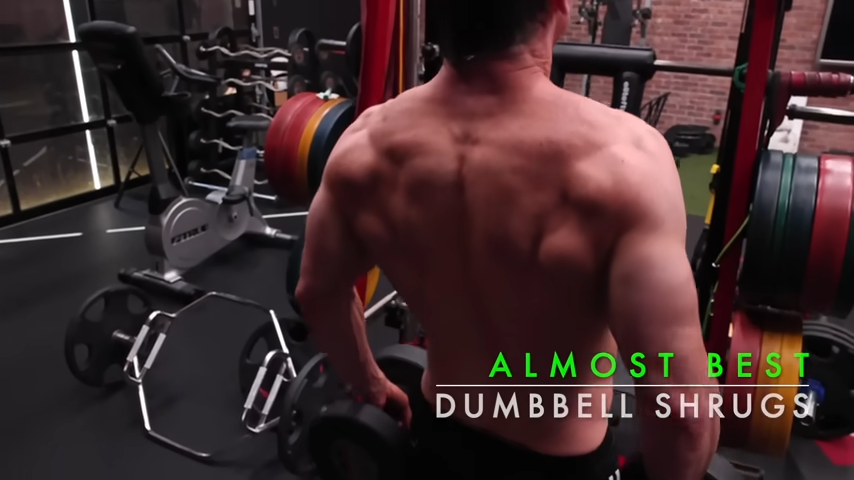
HOW TO DO DUMBBELL SHRUGS:
- Grab a pair of dumbbells and hold them at your sides in a neutral grip. This starting position keeps the weights in line with your body instead of out in front like a barbell, which immediately reduces stress on the shoulder joints.
- Stand tall, brace your core, and let your arms hang naturally without bending the elbows.
- From here, lift your shoulders up and slightly back toward your ears, following the angle of the trap fibers.
- Pause at the top for a hard one-to-two second squeeze, then lower slowly while allowing the shoulders to drift slightly forward for a fuller stretch.
- Reset, then repeat for controlled reps.
WHAT MAKES IT EFFECTIVE: The Dumbbell Shrug doesn’t have to be overloaded to be effective. If you’re already deadlifting heavy or doing other compound lifts that hammer the traps, dumbbells give you the benefit of neutral positioning and greater joint-friendliness compared to a barbell held in front.
BARBELL SHRUGS VS. DUMBBELL SHRUGS
When it comes to trap training, it’s not always about stacking more plates. The best shrug variation for you depends on what the rest of your training already looks like.
As I mentioned above, if you’re doing a lot of heavy deadlifting, your traps are already under significant load from those compound pulls.
In that case, piling on more heavy Barbell Shrugs isn’t going to add much.
This is where Dumbbell Shrugs make sense: the neutral grip keeps the weights at your sides, takes pressure off the shoulders, and still delivers a direct hit to the traps without beating up the joints.
On the other hand, if you’re not deadlifting much, Barbell Shrugs give you the advantage of heavy loading.
They let you expose the traps to higher overall tension and training stress, which is one of the main drivers of muscle growth.
Just remember that going heavier in weight doesn’t give you free access to sloppier form. Barbell Shrugs still need strict form to protect the cervical spine and shoulder joints.
Overall, both versions are effective.
Barbell Shrugs excel at building raw trap strength when you’re not already pulling heavy.
Dumbbell Shrugs shine when you want trap development without the added joint strain of a barbell in front of the body.
Use the one that best supports your current programming and rotate both if you want a complete trap-building approach.
SHRUGS: COMMON MISTAKES
Shrugs are one of those lifts that look too easy to mess up, but that’s exactly why most lifters get them wrong.
Even the smallest mistakes in range of motion, posture, or load can flip Shrugs from a trap-builder into a joint-destroyer.
Let’s break down the most common mistakes and how they’re costing you size and strength.
USING TOO MUCH WEIGHT
The biggest trap-killer is ego.
Loading the bar with weight plates you can’t control doesn’t make your upper trapezius grow. It just shortens the range of motion to an inch or two.
Instead of elevating and squeezing the traps, you end up bouncing the bar with momentum. This not only reduces muscle contraction but also overloads the shoulder joints and cervical spine.
Use training weights you can pause with at the top of the exercise. If you can’t hold for at least a second, it’s too heavy.
Remember, shrugs aren’t about moving the most iron. They’re about perfect technique.
ROLLING THE SHOULDERS
One of the most common (and dangerous) errors is rolling the shoulders forward or backward during Shrugs.
Rolling doesn’t increase trap activation. It shifts load into the rotator cuff and forces the shoulder through unnecessary glenohumeral abduction.
That’s a recipe for irritation and long-term wear on the shoulder joints.
Elevate the shoulders up and slightly back, following the line of the trap fibers. Think “ears to shoulders,” not “shoulders in circles.”
The only movement should be vertical with a slight retraction. No rolling and no twisting.
BENDING THE ELBOWS
One of the quickest ways to ruin a Shrug is by turning it into a half-rep curl.
When you bend the elbows, you shift tension into the arms instead of the traps. The traps elevate the scapula. They don’t flex the elbow.
If your Barbell or Dumbbell Shrug looks more like the start of a Biceps Curls set, you’re not training the right muscle group.
Keep the arms stretched out and locked in the starting position.
The only motion should come from the shoulders moving up and slightly back, not the elbows bending.
Think “straight ropes holding the weights,” not “arms lifting the load.” This keeps the work exactly where it belongs: on the traps.
GOING THROUGH THE MOTIONS
Shrugs often get thrown in at the end of timed workouts as an afterthought.
Lifters rush through them just to check a box, thinking a few quick sets of bouncing reps will build traps. That mindset keeps traps small and underdeveloped.
Program shrugs with intent.
Use programming tips like increasing hold time at the top, adjusting tempo, or adding Single-Arm Shrugs for stability.
Treat shrugs like any other main lift by progressing the load, tracking your performance, and keeping form strict.
FALLING FOR FLASHY “NEW” VARIATIONS
Fitness products and social media are full of gimmicky Shrug variations that look cool on camera but don’t respect the function of the traps.
Anything that turns a shrug into an arm exercise, or tries to combine it with unrelated movements, waters down the effect.
Stick with variations that line up with trap anatomy.
Shrugs work because they elevate the scapula and stabilize the shoulder blades, not because you added a half rep of something else.
Overhead Dumbbell Shrugs, Cable Shrugs, or Single-Arm Shrugs all respect the function of the traps.
A shrug with a random curl or twist? Not so much.
SHRUGS: VARIATIONS
If you think one shrug fits all, you’re already limiting your trap growth. Different setups change the line of pull, the grip, and even how your shoulder blades move.
That means each variation can shift the stress slightly and reveal weak links the standard Barbell Shrug won’t touch.
Whether it’s Neutral-Grip Dumbbell Shrugs, Single-Arm Shrugs for stability, or Overhead Dumbbell Shrugs for scapular control, the smartest trap training comes from picking the right tool for the job.
Be sure to mix up your shoulder and back workouts with these shrug exercise variations:
KNEELING DUMBBELL SHRUGS

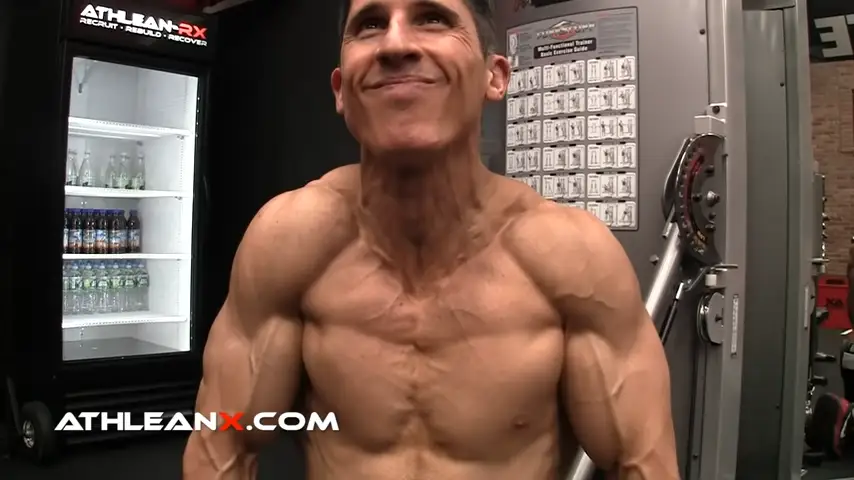
HOW TO DO KNEELING DUMBBELL SHRUGS:
- Set up by kneeling on the floor with your knees about hip-width apart.
- Keep your torso completely upright and brace your core as if you’re about to take a punch.
- Hold a dumbbell in each hand with your palms facing your sides and your arms hanging fully extended.
- From this starting position, focus on moving only at the shoulders. Drive them up and slightly back, following the natural angle of the trap fibers, almost like you’re trying to press your ears into your shoulders.
- At the top, hold the contraction for a solid one- to two-second pause. That pause is where the traps are under maximum tension, so don’t rush it.
- Lower slowly under control, letting the shoulders drop and stretch forward just slightly before resetting.
WHAT MAKES IT EFFECTIVE: Taking the lower body out of the equation removes the temptation to cheat with momentum. Without the ability to bounce through the legs or hips, the traps are forced to do all the work. That isolation makes kneeling dumbbell shrugs a brutally honest test of your upper trapezius strength.
TRAP BAR SHRUG

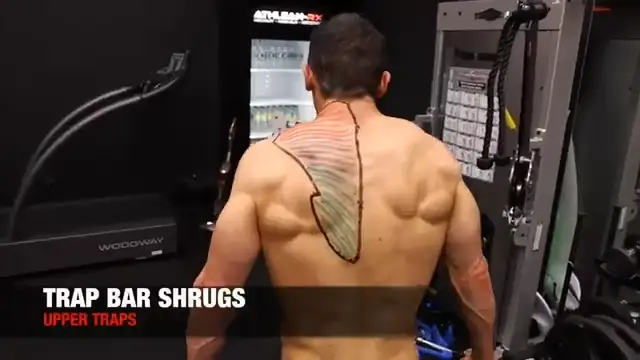
HOW TO DO TRAP BAR SHRUGS:
- Step into the center of the trap bar and set your feet about hip-width apart. Push your hips back into a hinge, then reach down and grab the handles with a neutral grip.
- Brace your core, lock in your posture, and drive through the floor to stand tall with the bar hanging naturally at your sides.
- From this starting position, keep the elbows straight and arms quiet.
- Shrug your shoulders up and slightly back, following the natural line of the traps.
- Hold the top contraction for a solid one to two seconds before lowering slowly under control.
WHAT MAKES IT EFFECTIVE: The Trap Bar Shrug puts your arms at a slight outward angle, lining up perfectly with the trap fibers for a stronger squeeze at the top and a deeper stretch at the bottom. With the weight at your sides, it’s easier on the shoulders than a barbell while still allowing heavy loading. Add in the neutral grip and core demand, and you’ve got a joint-friendly shrug variation that builds size, strength, and stability all at once.
HANEY SHRUGS

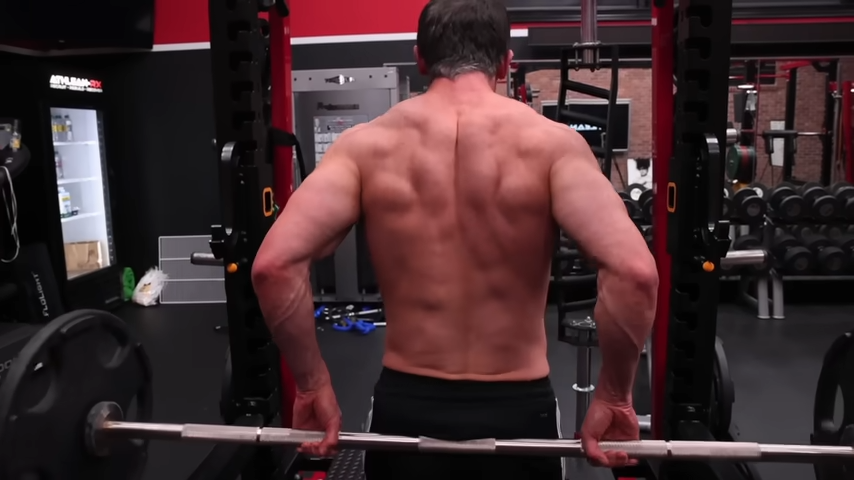
HOW TO DO HANEY SHRUGS:
- Set up with a barbell behind your body, resting it against the back of your thighs.
- Take an overhand grip with your hands just outside shoulder width, stand tall, and brace your core.
- From here, lean forward slightly at the hips. This angle is key.
- With arms straight, shrug your shoulders up and slightly back, pulling the bar along the line of your hamstrings as your traps contract.
- Hold the top position for a second before lowering slowly under control.
WHAT MAKES IT EFFECTIVE: The Haney Shrug takes the bar behind the body to match the traps’ true position on the back. That slight forward lean shifts tension from just the upper traps to also hitting the middle traps through added retraction. You won’t lift as heavy here and that’s the point. This variation forces strict form and quality contraction, making it one of the best ways to feel your traps do the work.
TRAP BAR CARRY

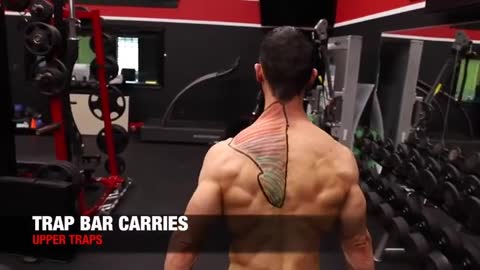
HOW TO DO THE TRAP BAR CARRY:
- Step inside the trap bar and center your feet about hip-width apart.
- Push your hips back as if you’re about to sit into a chair, then grab the handles with a neutral grip.
- Brace your core, lock in your posture, and drive through the floor to stand tall with the bar hanging at your sides.
- From there, begin walking forward in a straight line. Keep the steps short and controlled.
- The focus is posture: shoulder blades set, chest tall, and core tight. Think about carrying yourself like you’re balancing a weight on your head. Every step should feel stable, not rushed.
WHAT MAKES IT EFFECTIVE: The Trap Bar Carry is basically a shrug in motion. With the arms angled slightly outward, the load matches the trap fibers and keeps the upper traps firing step after step. Instead of a quick contraction, you’re sustaining tension while moving, forcing the traps, core, and grip to work together. It’s one of the best ways to build size and stability that carry over to real-world strength.
FARMER’S WALK

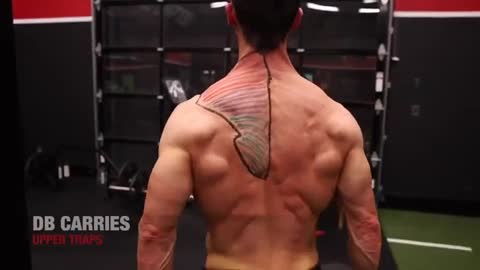
HOW TO DO THE FARMERS WALK:
- Grab a heavy pair of dumbbells and stand tall with your feet shoulder-width apart.
- Brace your core, set your shoulder blades slightly back, and let your arms hang naturally at your sides.
- From this position, walk forward in a straight line at a controlled pace.
- Keep your torso upright, no leaning, no twisting, and don’t let the dumbbells drift away from your body.
- The goal is posture under load. Walk until you either hit your target time or until your form starts to break down.
WHAT MAKES IT EFFECTIVE: With your traps firing continuously to keep the shoulder girdle stable while you move, the Farmer’s Walk trains them exactly for their real function: carrying heavy loads over time. Using dumbbells forces each side to work independently, fixing imbalances while also crushing your grip and forearms.
SHRUGS: PROGRAMMING AND PROGRESSION
The traps are a big, resilient muscle group designed to handle heavy loads and long durations of tension.
They respond best when you program them with intent just like you would for legs, chest, or arms.
If you want your traps to grow in both size and function, you need to respect them with the right frequency, volume, and progression.
FREQUENCY
The traps already get indirect work every time you deadlift, row, or carry weight, so you don’t need to hammer shrugs every day.
But they also won’t grow if you only hit them once in a while.
The sweet spot is 1 to 2 times per week, programmed as an accessory after your major compound lifts.
This ensures you train them when they’re fresh enough to give effort, but not at the expense of your heavy pulls and presses.
SETS AND REPS
Shrugs thrive on volume and time under tension, responding best when you accumulate stress over longer sets.
I would say that 3 to 5 sets of 10 to 20 reps work well for most lifters.
The key is not just the rep count. It’s what you do with each rep:
- Pause and squeeze at the top
- Control the eccentric on the way down
- Eliminate momentum
Done right, even a moderate load becomes extremely effective. If you can’t pause at the top for at least a full second, you’re going too heavy.
PROGRESSION
Progression in Shrugs isn’t just slapping on more plates every week. In fact, that approach is why most lifters end up bouncing half-reps with zero growth.
Real progression comes in three forms:
Load: Increase the weight only as long as you keep the pause and control.
Top-End Holds: Extend the contraction to 2 to 3 seconds to squeeze more fibers into the lift.
Slow Eccentrics: Take 3 to 4 seconds on the way down to stretch the traps under load.
Rotating these strategies keeps the traps growing without burning out your joints or relying on sloppy form.
Shrugs are a small movement, but they reveal how much discipline you really bring to your training.
Get sloppy and you waste time. Get precise and you unlock strength and stability that carry into every big lift.
Train them like they matter, and your traps will finally start to look and perform the way they should.
Check out our complete line of ATHLEAN-RX Supplements and find the best training program for you based on your fitness level and goals.
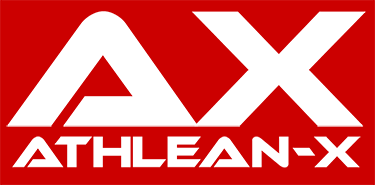
- By following the natural line of the trap fibers, shrugs let you overload the muscles in the exact way they’re designed to work, elevating and locking down the shoulder blades for strength, posture, and stability under heavy loads.
- Here’s how to do Shrugs:
- Grab a barbell with an overhand grip just outside hip width and let it hang in front of your thighs.
- Stand tall, feet shoulder-width apart and brace your core like you’re locking in for a heavy lift.
- From there, drive the shoulders up and slightly back but not straight up. Imagine trying to jam your shoulders into your ears while staying upright.
- At the top, don’t rush. Hold the position for one to two seconds and let the traps do all the work.
- When lowering, resist the temptation to just let the bar fall. Let the shoulders drift slightly forward as the bar comes down, stretching the traps fully before resetting.
- Think of the movement as up and back on the way up, forward, and down on the way down.
- Once you master the Shrug form and execution, be sure to mix it up with different Shrug variations like Kneeling Dumbbell Shrugs, Trap Bar Shrugs, Haney Shrugs, Trap Bar Carries, and Farmer’s Walks.
SHRUGS FAQ
Shrugs are designed to hit the upper trapezius, the muscles responsible for elevating and stabilizing the shoulder blades.
But that’s only part of the story.
When performed correctly, shrugs also recruit the middle traps, rhomboids, and levator scapulae for scapular control.
On top of that, the forearms and grip are challenged to hold onto heavy loads, and the core has to stabilize the entire body to keep posture locked in.
Think of shrugs as more than an “upper trap isolation” move. They’re a trap-focused exercise that ties into the bigger picture of strength and posture.
Stronger traps mean safer overhead pressing, more stability in rows and deadlifts, and better protection for your cervical spine under heavy loads.
Shrugs and Face Pulls serve two completely different purposes.
Shrugs elevate the shoulder blades and build the traps, while Face Pulls emphasize external rotation, scapular retraction, and rear delt development.
In other words, Shrugs are for building size and strength in the traps; Face Pulls are corrective, balancing out pressing volume and reinforcing healthy shoulders.
With that said, both belong in your program if you want complete upper body development.
Shrugs can be done with dumbbells, a barbell, or even on the smith machine if you want stability and constant tension.
And Face Pulls should never be skipped. They keep the rotator cuff strong and prevent the postural issues that come from too much pressing.
Think of Shrugs and Face Pulls as partners, not substitutes.
On paper, a Shoulder Shrug is one of the simplest movements in the gym: elevate the shoulders straight up (and slightly back) toward your ears, pause at the top, then lower under control.
But simple doesn’t mean easy.
The mistake most lifters make is rushing through reps or loading the bar so heavy that the range of motion disappears.
A proper Shoulder Shrug should feel like your traps are on fire by the time you hit your rep range.
The focus isn’t just moving weight. It’s building a contraction that translates into better posture, stronger lifts, and traps that stand out.
REFERENCES
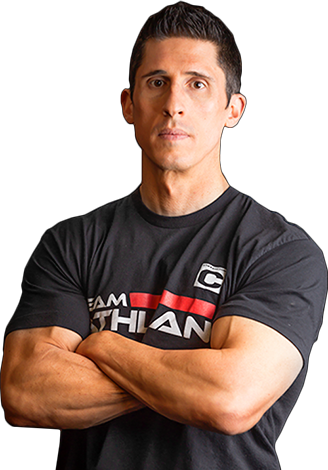
Jeff Cavaliere M.S.P.T, CSCS
Jeff Cavaliere is a Physical Therapist, Strength Coach and creator of the ATHLEAN-X Training Programs and ATHLEAN-Rx Supplements. He has a Masters in Physical Therapy (MSPT) and has worked as Head Physical Therapist for the New York Mets, as well as training many elite professional athletes in Major League Baseball, NFL, MMA and professional wrestling. His programs produce “next level” achievements in muscle size, strength and performance for professional athletes and anyone looking to build a muscular athletic physique.
